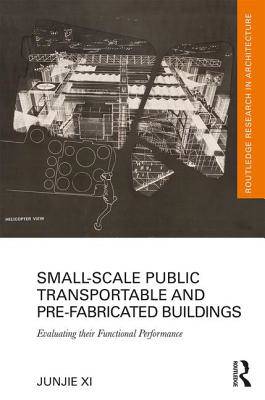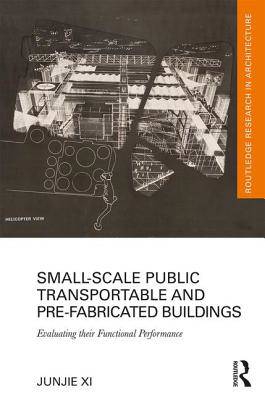
- Retrait gratuit dans votre magasin Club
- 7.000.000 titres dans notre catalogue
- Payer en toute sécurité
- Toujours un magasin près de chez vous
- Retrait gratuit dans votre magasin Club
- 7.000.0000 titres dans notre catalogue
- Payer en toute sécurité
- Toujours un magasin près de chez vous
Small-Scale Public Transportable and Pre-Fabricated Buildings
Evaluating Their Functional Performance
Junjie XIDescription
This book investigates the design, operation and use of contemporary transportable buildings, and explores how functional performance can be assessed in small-scale examples for public use alongside their relationship to other design elements. The research focuses on three case studies, Chengdu Hualin Elementary School, Exxopolis and Kreod, that do not require a high-technology building environment or complex construction skills. Transportable buildings are defined as those that are transported in a number of parts for assembly on site. Contemporary transportable buildings respond to ecological issues, social impacts, technological innovation and economic demands. They can be used to measure a society's development in environmental sustainability, innovation and economic growth through various forms. Small-scale transportable buildings fulfil many temporary habitation needs in diverse roles, such as non-emergency transitional housing, ephemeral exhibition buildings and seasonal entertainment facilities. Small-Scale Public Transportable and Pre-Fabricated Buildings will be a useful research text for academics and students in architecture, design and sustainable building performance.
Spécifications
Parties prenantes
- Auteur(s) :
- Editeur:
Contenu
- Nombre de pages :
- 260
- Langue:
- Anglais
- Collection :
Caractéristiques
- EAN:
- 9781138698482
- Date de parution :
- 07-03-18
- Format:
- Livre relié
- Format numérique:
- Genaaid
- Dimensions :
- 163 mm x 234 mm
- Poids :
- 612 g

Les avis
Nous publions uniquement les avis qui respectent les conditions requises. Consultez nos conditions pour les avis.






